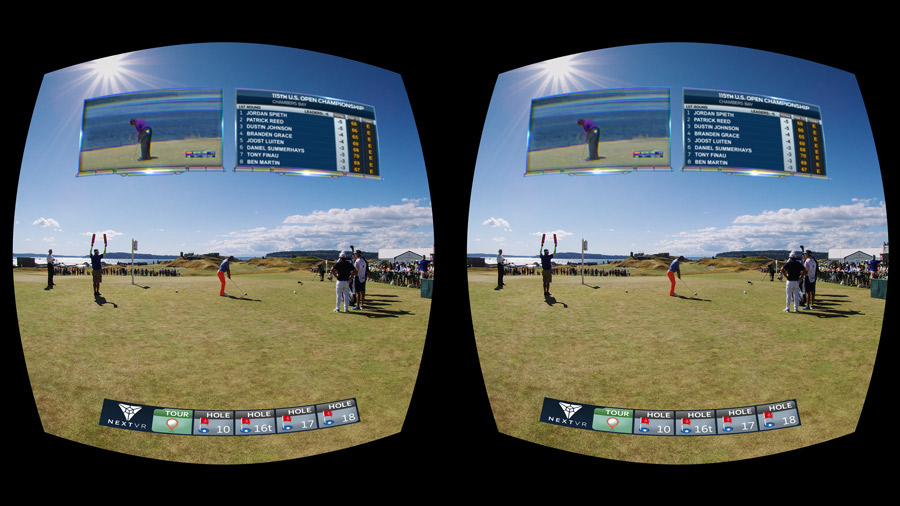No ratings yet. The growing impact of Virtual Reality in Sports.
Introduction
Watching a NBA-Match via VR streaming. Seeing your favourite soccer player score a goal like you are there in person, but you are just within your living room. It is possible with the Virtual Reality technology nowadays. Besides the fact that watching your favourite sport match is possible, there are much more possibilities. Think of many more opportunities using the VR-technology in sports, using it to analyse the performance of the game you played as a professional sports player for instance. Virtual Reality is used as an appliance in many sports such as golf, skiing, cycling and more. What will the future of Virtual Reality bring and moreover, what do you think about the role Virtual Reality can play?
What is Virtual Reality?
Virtual Reality refers to the computer technology using software to generate realistic images, sound effects and other sensations in order to replicate a real environment and simulate the users’ physical presence in this real environment. Virtual reality exists already since the 1950s, but is becoming increasingly important in today’s society. Popular VR-goggles at the moment are the Oculus Rift and HTC Vive. Nowadays, virtual reality is used in many different industries such as the gaming, music, cinema and healthcare industries. Though, it is interesting to take a glance at the application of virtual reality in sports. In general, there are two sides in which virtual reality is used. On the one side, the focus is on the spectators. Virtual Reality makes it available for spectators to get a real-life experience of a sports game using a VR goggles, instead of buying a ticket and going to the match. On the other side, professional sports players can make use of the VR-technology to fine tune certain aspects of their sports performance. For example, a golfer is trying to improve his swing making use of VR-goggles.
Why using Virtual Reality in Sports?
The trend is that more people are seeing the benefits of using virtual reality for different reasons. Concerning to the sports industry, there are various benefits and drawbacks. One of the benefits is that virtual reality is helping to develop the performance of an individual sports player or a sports team as whole. Virtual Reality is used as a training aid, where it can measure and analyse the performance of a sports player/team. In this way it is possible to get deeper and better insights in sports performance and so, fine tune the qualities and performances of each individual or team. On the other hand, virtual reality is used in the design of sports equipment such as clothing, shoes etcetera. Sports player are always searching for tools to getting faster, stronger or smarter at different situations in the games they play. Virtual reality can help develop for example better and steadier running shoes, which can make a 100m runner being faster and firmer on the pitch. Another benefit of using virtual reality is that it improves the audiences experience of a sports event. It is possible for spectators to walkthrough a stadium or other sports location, which can help them to search for the best spot to buy a ticket.
However, it is not just a bed of roses when we are talking about the application of virtual reality in sports. There are some boundaries concerning the use of it. Augmented reality is more appealing than VR, according to different tech-entrepreneurs and investors. Augmented reality adds a functional layer to the real world, where virtual reality is just another way of looking to the reality. Besides, the lack of user experience is not helping the enthusiasm for virtual reality appliance. Another drawback is the fact that costs can limit growth of virtual reality products. At the moment, a high-end VR computer costs approximately around $ 1,000. Moreover, many high-end computers are not even VR-ready at all.
Most of all, the practicality of virtual reality in sports shows a world where spectators and athletes themselves getting to a whole new experience of watching or exercising sports. Without too much focus on the high costs, the lack of user experience or the emerging trend of augmented reality, virtual reality can be of great importance to lift sports and the perception of sports to a higher level. What do you think? Can virtual reality be the new way of experiencing and practicing sports or will it make the current perception of sports more and more impersonal?
References:
Virtual Reality in Sports Poses Unique Challenges for Producers
Virtual Reality; alles wat je moet weten
Virtual Reality
http://www.vrs.org.uk/virtual-reality-applications/sport.html
http://www.techradar.com/news/wearables/htc-vive-vs-oculus-rift-1301375
‘Augmented reality wordt groter dan virtual reality’
http://europe.newsweek.com/cost-limit-growth-virtual-reality-products-496716?rm=eu


